
|
Hydrolator Lawsuit? | ||
|
|
|||
|
With its deep corporate pockets, Disney is a target of lawsuits, including frivolous ones. The story of one particularly silly lawsuit and how it was resolved with irrefutable evidence has been told over and over in different forms. But did it really happen?
|
|||
|
The Claim: A woman sued Disney, claiming eardrum damage from the pressure change during her rapid descent in a “hydrolator” at The Living Seas at EPCOT Center. Disney’s lawyers transported the judge and jury to EPCOT Center, took them into a “hydrolator,” and operated it with both doors open—revealing that there is no actual descent. The judge dismissed the case on the spot. Status: Undetermined, but very unlikely |
|||
|
|
|||
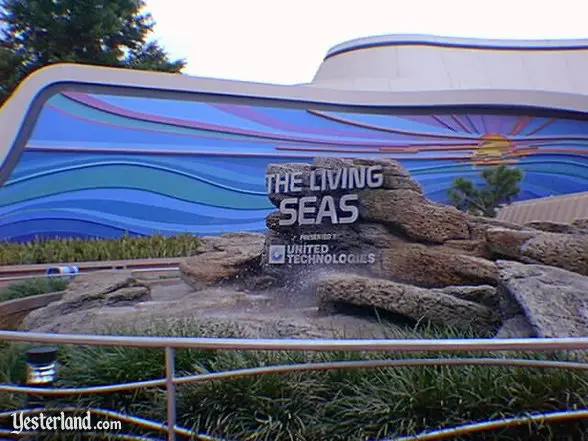
The Living Seas, Presented by United Technologiess (1996 photo) |
|||
|
The 1989 EPCOT Center Guide Book had this description of The Living Seas: The world’s largest man-made salt-water environment holds 5.7 million gallons of seawater and more than 80 species of tropical fish and mammals, including sharks, manatees and dolphins. Travel to the bottom of the sea in hydrolators and arrive at Sea Base Alpha. Talk to divers and marine scientists who explore the world’s most impressive man-made coral reef. Try on an atmospheric diving suit, and test your knowledge with interactive video games. There are also special displays that detail the life-cycles and food chains of the seas, from the smallest plankton to the largest predators. Did you catch the part about traveling to Sea Base Alpha at “the bottom of the sea” in hydrolators? |
|||
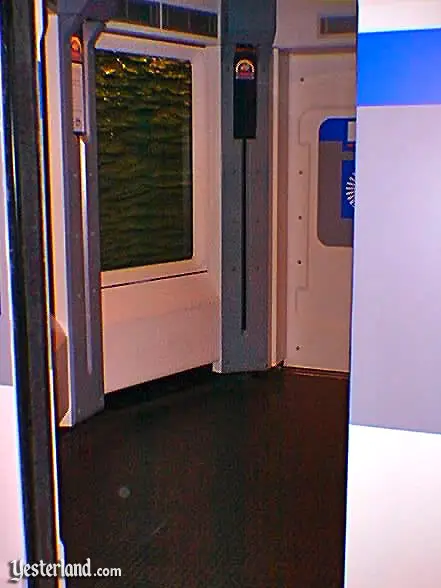
A descent hydrolator (1996 photo) |
|||
|
The Epcot pavilion that’s now The Seas with Nemo and Friends originally opened on January 15, 1986, as The Living Seas, Presented by United Technologies. Blending entertainment and education, the $90 million enhancement to EPCOT Center offered short movies, a short ride, and a magnificent ocean aquarium based on the premise of a futuristic, underwater research facility called Sea Base Alpha. After guests watched two film presentations, they were directed to one of the three descent hydrolators. These unusual elevator cabs had glass windows revealing water-filled, sedimentary rock shafts. The Otis Elevator doors would close. The lights would flicker. Indicators showed a rapid descent and the floor shook. Guests could see that they were speeding downward through the rocky shaft, as air bubbles in the water moved upward. The hydrolator would stop and a second set of Otis Elevator doors would open. The guests were now down at Sea Base Alpha. Later, they would return to the surface using a different set of hydrolators, which were windowless. |
|||
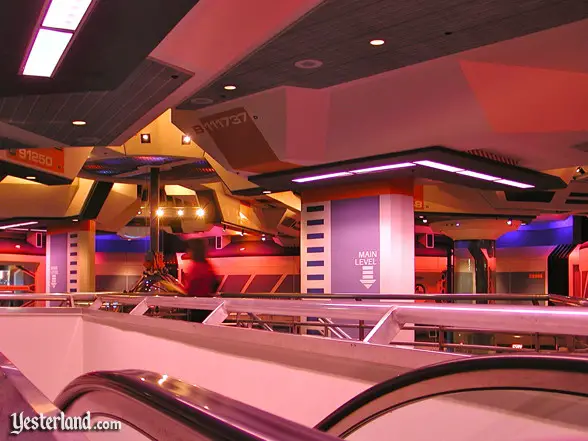
Escalators connect the two levels of Sea Base Alpha. (2002 photo) |
|||
|
It was obvious to most adults that the hydrolators didn’t dive many fathoms into seas below EPCOT Center. There was no change of elevation. The rocky sides of the shaft were actually wide conveyor belts with a rocky texture. And what adult would believe that there’s an ocean bottom far below a theme park in Central Florida? Which brings us back to the story of the lawsuit… It’s a story we want to believe because we want to laugh at our litigation-happy culture. The plaintiff thought that the hydrolators are real. And the plaintiff either imagined actual physical consequences from her “descent” or fabricated the story in the hope of winning a settlement from Disney. She found a clueless or greedy attorney to represent her. The case went to court as a jury trial. And instead of being quickly settled in the judge’s chamber or in the court room, everybody took a field trip to The Living Seas—where the secret was dramatically revealed. There are variations. Sometimes, the plaintiff was man. The plaintiff’s injury is usually a claim of ruptured eardrums, but other versions of the story involve decompression sickness (“the bends”) or a back injury. In one version of the story, the plaintiff wore bandages over her ears in front of the judge. And in my favorite ending, the embarrassed plaintiff—who was in the hydrolator with the judge, jury, and attorneys when the truth emerged—escaped into the crowd at EPCOT Center, never to be seen again. |
|||
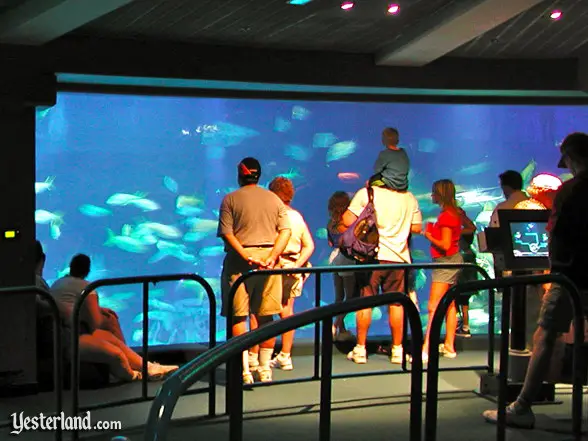
Viewing the 5.7 million-gallon seawater aquarium (2002 photo) |
|||
|
My Google searches found many reports of this story, primarily on web forums and blogs. I’ve also heard the story on podcasts. It’s usually presented as an established fact; almost nobody is skeptical. One reason for this is that people heard it from trusted sources. Not only were Cast Members at The Living Seas fond of telling the story, but guests would even hear it from their guides on two of Disney’s behind-the-scenes tours, the 4-hour UnDISCOVERed Future World tour and the 7-hour Backstage Magic tour. Surely, there are adults who believed they were descending deep underwater. People sue for all sorts of silly reasons. And if the story is part of the official or unofficial script for Disney’s backstage tours, there must be some truth to it, right? So what is the real story? |
|||

Exit via the ascent hydrolators (2002 photo) |
|||
|
I logged on to ProQuest, a research tool with the ability to search against a vast database of newspapers, magazines, and journals going back decades. Most lawsuits don’t wind up in such publications, but the press is fond of reporting interesting lawsuits against Disney. I tried all sorts of different searches. I found articles mentioning the hydrolators, EPCOT Center, and The Living Seas, but not in relation to any hydrolator lawsuit—with one exception. Less the one year after the opening of The Living Seas, the Montreal Gazette published an article (“Walt Disney World has been ‘fooling’ people for 15 years” by Jay Clarke, January 10, 1987) that provided a clue about the lawsuit story. Here’s an excerpt with the key paragraph: “It’s probably apocryphal,” remarked Marty Sklar, president of WED Imagineering, the creative arm of the Disney operation, “but there’s a story going around that somebody was going to sue Disney for damage to his eardrums because of the change in pressure when he went ‘down’ in the hydrolator. I can’t wait for that one.” There were no subsequent articles about such a lawsuit in any publication in the ProQuest resources that I have access to. |
|||
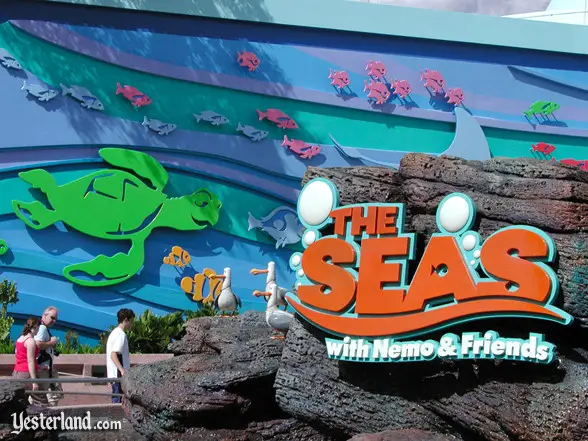
The Seas with Nemo and Friends (2006 photo) |
|||
|
My lack of success in finding articles is not proof that there was never such a lawsuit. The press could have ignored the lawsuit at the time it happened, as well as later when writing about past theme park injury lawsuits against Disney. Or perhaps there were such articles, but they are somehow all missing from ProQuest. However, there are other reasons to believe it’s just a myth—at least the part about the circumstances of the dismissal. Even if we assume that a guest wanted to sue Disney over such an incident and found an attorney willing to take the case, Disney’s attorney would have been able to show the plaintiff’s attorney that the lawsuit would be an expensive waste of time—just by showing a photo or design drawing of how the hydrolator illusion worked. In the highly unlikely case that the plaintiff’s attorney then chose to go forward anyway, a judge, seeing Disney’s evidence, would almost certainly have dismissed the suit as without merit, before any trial. And if, inexplicably, the case actually went to trial, its resolution would not have required a field trip to The Living Seas, merely testimony from a subject matter expert from Disney. A much more likely explanation is that the amusing story that Marty Sklar told Jay Clarke was retold over the years with various embellishments, taking on a life of its own. It made it into the Cast Members’ oral history of The Living Seas and even into scripts for tours. In this article, I did not prove that the story of the lawsuit is false. It’s very hard to prove that something never happened. Now here’s my challenge to the readers. Does anybody have proof that the story is true? |
|||
|
|
|||
|
|
© 2012 Werner Weiss — Disclaimers, Copyright, and Trademarks Updated June 8, 2012.
Photo of exterior of The Living Seas: 1996 by Allen Huffman. |
||